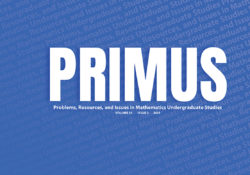eric.ed.gov har udgivet: The shift to the Common Core at the Lazaro Cardenas Elementary School, a pre-K to third grade school in a predominantly Latino area in southwest Chicago, rested on instructional improvement efforts Jeremy Feiwell initiated five years earlier in 2006, when he became Cardenas’s principal. Feiwell knew from his years as a teacher at Cardenas that curriculum and instruction at the school varied widely–every teacher was doing something different in his or her classroom. Meanwhile, the school–where 52 percent of students are English language learners and 97 percent come from low-income households–was the lowest performing of the 23 schools in the community. By 2016, the school was the highest performing in math in the south side of Chicago, and one of the top schools for reading. Cardenas’s staff… Continue Reading →
Like this:
Like Loading...
eric.ed.gov har udgivet: Science Olympiad (SO) is a national non-profit organization which holds science competitions for students in grades 7-12 within 50 states with each event aligned to Next Generation Science Standards (NGSS, 2010). The purpose of this article is not only to align the Common Core State Standards in Mathematics (CCSSM) with Science Olympiad events, but also to determine Webb’s Depth of Knowledge Levels (DOK) within the mathematics content. This alignment was achieved by utilizing a content analysis and the Depth of Knowledge alignment processes (Webb, 1999). The findings in this study indicate there are a significant number of SO events that are aligned to the CCSSM with high levels of Depth of Knowledge within the Division B (grades 6-8) and C (grades 9-12) events. Link til kilde
Like this:
Like Loading...
tandfonline.com har udgivet en rapport under søgningen “Teacher Education Mathematics”: Abstract Formulae display:?Mathematical formulae have been encoded as MathML and are displayed in this HTML version using MathJax in order to improve their display. Uncheck the box to turn MathJax off. This feature requires Javascript. Click on a formula to zoom. Governmental and educational organizations have pointed out that students coming into the biological sciences require stronger skills in statistics and data modeling that are not usually addressed in typical engineering-based calculus courses. Our work here documents how faculty in biology and mathematics addressed this issue at a large urban university in the southwestern USA. The Calculus for Life Sciences course was redesigned to integrate data analysis and engage students in activities connecting the foundational and practical aspects of statistics-based… Continue Reading →
Like this:
Like Loading...
